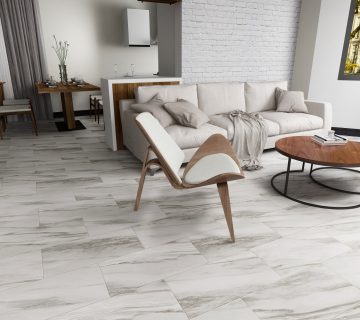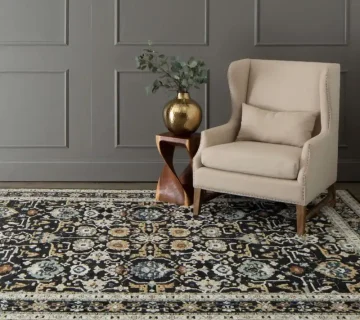Flooring a new home or renovation is no small task, and getting the right type of flooring is an important decision. While carpet may be replaced every few years the likelihood is that wood, tile or laminate flooring will remain in place for ten years or more.
Hardwood flooring, engineered wood, tiles and even stone have their place but are both expensive and have challenges in terms of durability, cost and warmth; so are not practical for many families.
Laminate has been a popular choice of flooring for the past couple of decades, it is generally inexpensive when lifespan is taken into consideration, looks good and can be fitted by those proficient in DIY.
Another type of flooring that most know by the two largest brands of Amtico and Karndean is Luxury Vinyl Tile (LVT). Luxury Vinyl Tile was traditionally a dry-back product, stuck down with adhesive onto high grade plywood or smoothed concrete sub-floors. Today LVT is available in click, with an installation similar to most laminates making it easier to fit. Most flooring specialists would still recommend the glue down product as it is viewed as more robust, and generally works out cheaper than its click counterpart.
Luxury Vinyl Tile is, as a rule of thumb, more expensive than laminate flooring but while the two best known brands are on the higher priced end of the market there are hundreds of other brands and manufacturers to choose from at every end of the spectrum.
While laminate flooring can be cold under foot, Luxury Vinyl Tile is warmer, can provide excellent texture and is not limited to wood planks but can provide durable and more practical stone, marble and tile effects. For many the most important characteristic of LVT flooring is that it is waterproof. While laminate is made up of layers of wood or particle board, LVT consists of layers of PVC with a high definition print. Because of this it is structurally more stable and water ingress will not cause it to swell or warp, making it not only ideal for dealing with spills but able to be used in bathrooms and kitchens meaning one type of flooring could be used throughout an entire house. The technology of some of the more advanced Luxury Vinyl Tiles and plans allows them to be embossed and textured to follow the natural grooves, waves and knots that would be found in real wood, stone or tile. Laminate boards although thicker from top to bottom generally have thinner wear layers, whereas LVT boards and tiles can have not only domestic but commercial guarantees from 5 to 20 years.
While fitting of laminate and LVT can be done by a competent DIY person, laminate is a little more forgiving. Luxury Vinyl requires a sub-floor which is smooth and flat, small bumps or imperfections that would be hidden by laminate, if large enough, will show on a Luxury Vinyl floor making sub-floor preparation, and the associated cost, higher.
In summary, both laminate and LVT have benefits over wood, tile and stone flooring as well as over each other.
Laminate is:
- Generally cheaper than other types of flooring
- Relatively easy and cheap to install
- Stain resistant
- Relatively hard wearing
- Easy to clean (although care must be taken to get it too wet)
However suffers from some drawbacks:
- Can be cold under foot
- Does not handle water or moisture well
- Is limited to wood effect
- Has a lower wear layer
Luxury Vinyl Tile is:
- Warm under foot
- Provides excellent and realistic texture
- Offers stone, tile and wood effects
- Can be customised to create borders and designs such as herringbone, basket weaves, chevron, and more
- Thicker wear layer making it more durable
- Easy to clean
- Waterproof
But does have some drawbacks, including:
- More involved or expensive fitting costs
- Generally more expensive than laminate (although cheaper ranges are available)
- Does not deal as well with exposure to flame



